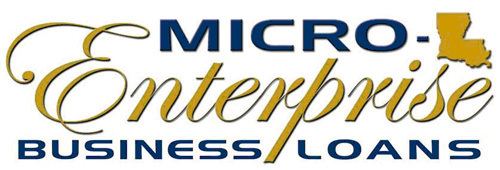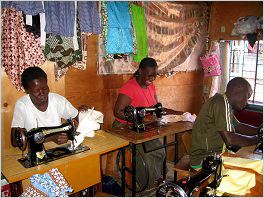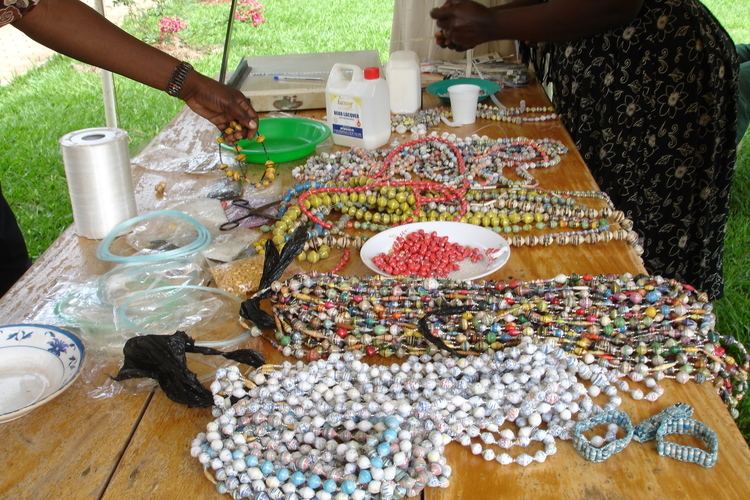 | ||
Micro enterprise project in southern india
A micro-enterprise (or microenterprise) is generally defined as a small business employing nine people or fewer, and having a balance sheet or turnover less than a certain amount (e.g. 2,000,000 euros or PhP 3,000,000). The terms microenterprise and microbusiness have the same meaning, though traditionally when referring to a small business financed by microcredit the term microenterprise is often used. Similarly, when referring to a small, usually legal business that is not financed by microcredit, the term microbusiness (or micro-business) is often used. Internationally, most microenterprises are family businesses employing one or two persons. Most microenterprise owners are primarily interested in earning a living to support themselves and their families. They only grow the business when something in their lives changes and they need to generate a larger income. According to information found on the Census.gov website, microenterprises make up 95% of the 28 million US companies tracked by the census.
Contents
- Micro enterprise project in southern india
- History of the concept
- Global definitions
- Australia
- European Union
- United Kingdom
- United States
- Contributions to the larger economy
- Financing
- Government programs
- Recent development in the United States
- In developing countries
- Women in the Dominican Republic
- References

History of the concept

The concepts of microenterprise and microfinance were pioneered in 1976 by Nobel Prize recipient Muhammad Yunus, founder of the Grameen Bank (Bank of the Poor), in Bangladesh. The bank was established for the purpose of making small loans to the poor − predominantly women – to help them obtain economic self-sufficiency. The fundamental principle behind the Grameen Bank is that credit is a human right. This strategy was highly effective as the bank grew exponentially; from fewer than 15,000 borrowers in 1980, Grameen Bank had 2.34 million members by 1998, 7.67 million at the end of 2008, 97% of whom are women, and 9.4 million today.
Global definitions
The term microenterprise or microbusiness refers to different entities and sectors depending on the country.
Australia
In Australia, the term refers to a business bigger than a single owner-operator, but having up to 5 employees.
European Union

The European Union (EU) defines "micro-enterprises" as those that meet two of the following three criteria and do not fail to do so for at least 10 years:
United Kingdom

The Office for National Statistics and the Department for Business, Energy and Industrial Strategy both maintain statistical records which officially classify businesses of 1-9 employees as being micro-businesses. The House of Commons Library maintains a briefing note pulling together these statistical sources.

In May 2013 David Young, Baron Young of Graham published a report for government on supporting micro-business growth in the UK, "Growing your business: a report on growing micro businesses".
United States
In the United States, a different model is used, but the stated goals and core values are similar. Here, a microenterprise is defined as a business with five or fewer employees. Many of these businesses have no employees other than the self-employed owners. Additionally, such microenterprises generally need less than $35,000 in loan capital and do not have access to the conventional commercial banking sector. The basis of microenterprise in the U.S. is entrepreneurship, recognizing a fundamental right of people to apply their individual talents, creativity and hard work to better their lives.
Microenterprise programs, therefore, are built around the philosophy that the unique ideas and skills of entrepreneurs and would-be entrepreneurs should be provided business assistance and small amounts of credit to support the development or start-up of a small business, primarily through the U.S. Small Business Administration. Most organizations in the field also focus their services on those microentrepreneurs who, as defined by federal government standards, are low-to-moderate income. By definition, most of these entrepreneurs are minorities, recent immigrants, women, disabled or for other reasons have special challenges that reduce their ability to access traditional credit and other services.
Contributions to the larger economy
Microenterprises are said to add value to a country's economy by creating jobs, enhancing income, strengthening purchasing power, lowering costs and adding business convenience.
Financing
Because microenterprises typically have little to no access to the commercial banking sector, they often rely on "micro-loans" or microcredit in order to be financed. Microfinance institutions often finance these small loans, particularly in the Third World. Those who startup microenterprises are usually referred to as entrepreneurs. Micro-loans are a way for organizations and entrepreneurs to make small loans to those in poverty often in third world countries. The term "micro-loans" is more commonly referred to as Microcredit.
Government programs
Government support for microenterprises varies from country to country. Plan for Achieving Self Support is a program offered by the United States Social Security Administration (or SSA) to encourage persons that are Supplemental Security Income (or SSI) eligible who are disabled to set aside moneys for various reasons: training, schooling and funding microenterprise as a Work Goal.
The NEIS (New Enterprise Initiative Scheme) is a government program in Australia, which assists unemployed people to start their own businesses. Although it is not specifically for micro-businesses, many if not most businesses started in this program are micro-businesses (in the senses of having limited capital, and only one person involved in the business).
Recent development in the United States
The microenterprise field has a twenty-year history in the United States. While the term “microenterprise” was in common use internationally by the late 1970s, it came into domestic use within the United States about a decade later. Traditionally, the business sector had been categorized into three groups: large, medium, and small. The U.S. Small Business Administration (SBA) defines a small business as having up to 500 employees. In 1991, the SBA recognized microenterprise as a separate or distinct category of business.
Microloans may be used for general business expenses such as, working capital and tangible assets, such as inventory, furniture, and equipment. They cannot be used to pay the microbusiness owner, to purchase real-estate, pay existing debt, or for non-qualifying not-for-profit entities.
During the 1990s, the microenterprise field grew rapidly in the United States. Starting with a small number of non-profit organizations testing developing country models, the field now has service providers in every state, a national trade association (AEO), a growing number of state-level associations and financing intermediaries, and several research and policy organizations. The Aspen Institute and FIELD (Microenterprise Fund for Innovation, Effectiveness, Learning and Dissemination) has collected data on the organizations in the field since 1992. The first directory, in 1992, listed 108 organizations that identified themselves as working in the field. By 2010 this number had grown to over 800 organizations that provide direct services to entrepreneurs—either microfinancing or business development services.
Community Development Financial Institutions (CDFI's), particularly Community Development Loan Funds frequently offer loan capital for microenterprises in the United States.
Anthony Hilb, author of Make Money with a Microbusiness, and founder of microbusinessowners.com stated, "Microbusinesses have existed since people first exchanged goods and services in their communities. Today, microbusinesses can have a much larger impact; products and services can be exchanged at previously unimagined volumes, distances, and speeds. Credit here is due to advancements in technology. With the internet, apps, and other technologies available (often for free), microbusinesses will continue to explode in popularity."
In developing countries
In developing countries, microenterprises constitute the vast majority of the small business sector—a result of the relative lack of formal sector jobs available for the poor. Microenterprises in developing countries, then, tend to be the most frequent form/size of business. As explained by Aneel Karnani:
Most microcredit clients are not microentrepreneurs by choice. They would gladly take a factory job at reasonable wages if it were available. We should not romanticize the idea of the "poor as entrepreneurs." The International Labour Organization (ILO) uses a more appropriate term for these people: "own-account workers."
Paper to Pearls is another example of a micro-enterprise program, which is based in the United States, but works with women in northern Uganda.
The International Fund for Agricultural Development (IFAD) Vietnam country programme supports operations in 11 poor provinces. Between 2002 and 2010 around 1,000 saving and credit groups (SCGs) were formed, with over 17,000 members; these SCGs increased their access to microcredit for taking up small-scale farm activities.
In Poland, in 2012, there were 1.7 million micro-enterprises, employing 3.5 million persons.
Women in the Dominican Republic
In the Dominican Republic, a nationwide survey conducted in 1992 revealed that 330,000 micro and small enterprises created employment for 26 percent of the economically active population. Furthermore, a significant portion of this is represented by women (38 percent).
It is argued that the households of women are targeted more directly by microenterprise support services because women tend to devote more of their income to their households, than do men. Therefore, it is recommended that microenterprise training programs be less gender-neutral and should be diversified to address the central challenges of women's businesses.
